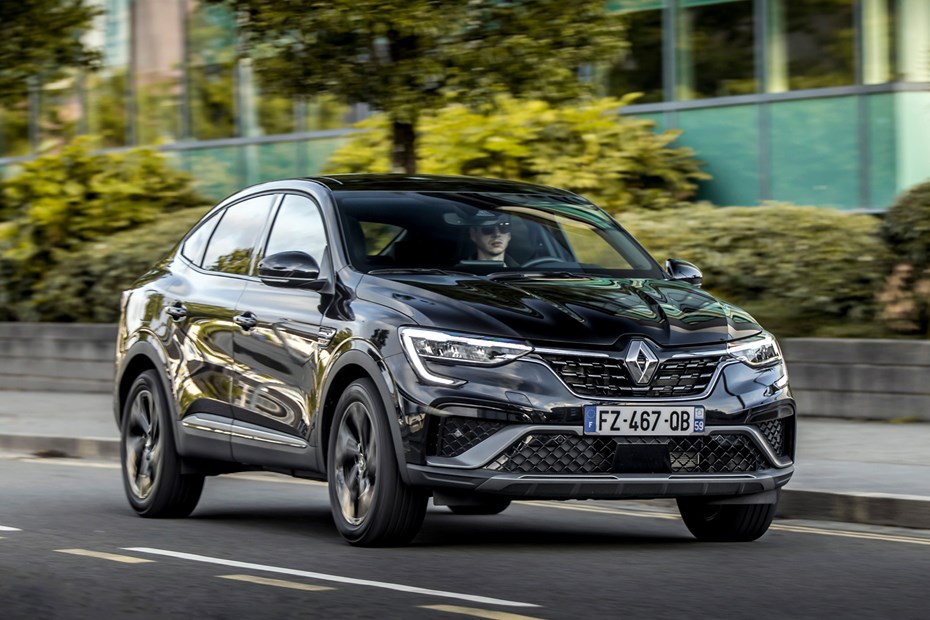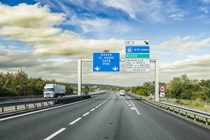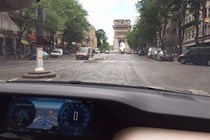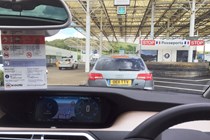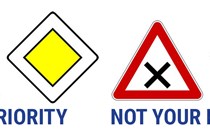France is one of the easiest places for UK holidaymakers to get to with your car, between the ferries and Channel Tunnel, so it’s an extremely popular destination. Even if you’re not staying in France, you still need to drive through it to access the rest of Europe by road from Channel ports, so it pays to be aware of the country’s traffic regulations.
Other than remembering which side of the road to drive on once your tyres hit French soil, there are many other things you need to know about, from the speed limits to the items you need to carry in your car in case of a breakdown. In recent years France also has many low emission zones which might restrict where you can drive, depending on your car. Then there are the potential speeding fines, autoroute tolls and so on. In this guide we’re going cover everything need to know before venturing to France in your car.
French speed limits
France has a two-tier speed limit system. One set of limits apply when the weather is clear and dry, the when it’s raining. The limit usually varies by 10-20km/h (6-12mph) depending on the kind of road, though lower urban speed limits remain the same regardless of weather. France also has a set of limits for novice drivers (defined as those who’ve been driving for under two years). They correspond to the wet weather limits, and also place restrictions on the number of passengers you can carry, and on night driving.
Dry weather speed limits:
- Low-speed urban areas: 30km/h (18mph)
- Built-up areas: 50km/h (31mph)
- Outside built-up areas (two lane roads): 80km/h (50mph)
- Dual carriageways with no central reservation: 90km/h (56mph)
- Dual carriageways and non-toll Autoroutes (motorways): 110km/h (68mph)
- Tolled Autoroutes (motorways): 130km/h (80mph)
Wet weather speed limits (where different from above):
- Dual carriageways with no central reservation: 80km/h (50mph)
- Dual carriageways and non-toll Autoroutes (motorways): 100km/h (62mph)
- Tolled Autoroutes (motorways): 110km/h (68mph)
The Paris Périphérique (ring road) has a speed limit of 80km/h (50mph), while there’s a blanket 50km/h (31mph) speed limit in place on all roads in foggy weather, when visibility is under 50 metres.
Speed-limit signage can be a bit confusing on French motorways as limits for cars, cars with trailers and lorries are signposted separately. The permitted speed for slip roads is also signposted on the main carriageway, while limits can also change frequently around busy junctions. Additionally, France doesn’t always have signs denoting certain limits, such as when entering an urban area – you should interpret a village entrance sign as indicating a lower limit, for example.
Speeding fines in France
The French police used to have a reputation for ignoring speeding drivers, especially those from abroad, but that hasn’t been the case for a while, and rules are now strictly enforced. If you’re stopped while driving in France, it’ll most likely be the Gendarmerie (military police) that you’re dealing with. But there are other law enforcement bodies that can stop you on the road, such as the customs police.
If you’re stopped for speeding, don’t think you’ll get away with a summons in the post – the police can issue on-the-spot fines and, if you don’t have the money on you, they will accompany you to a cashpoint. If you’ve exceeded the limit by more than 40km/h (24mph), your licence may be confiscated on the spot. If that happens, someone else in your party will need to take over driving, or you’ll have to get your car recovered at your own cost.
Speeding fines aren’t small, though at the lower end they’re a little less than the standard £100 you’ll get in the UK. Fines currently starts at €68 (£58 at the time of writing) if you’ve exceeded the speed limit by under 20km/h (12mph), provided it wasn’t in an urban area – it goes up to €135 (£116) if you were speeding in town, the same as if you were speeding by up to 30km/h (18mph) elsewhere.
Things begin to escalate from there. For speeding between 31-50km/h (19-31mph) over the limit you’ll pay a €135 (£116) fine and won’t be able to drive in France for three years. At more than 50km/h (31mph) over, you can be fined up to €1,500 (around £1,280) and your car may be confiscated. Really take the mickey with limits or get caught more than once, and fines can total €3,750 (more than £3,200); you might even get up to three months in jail.
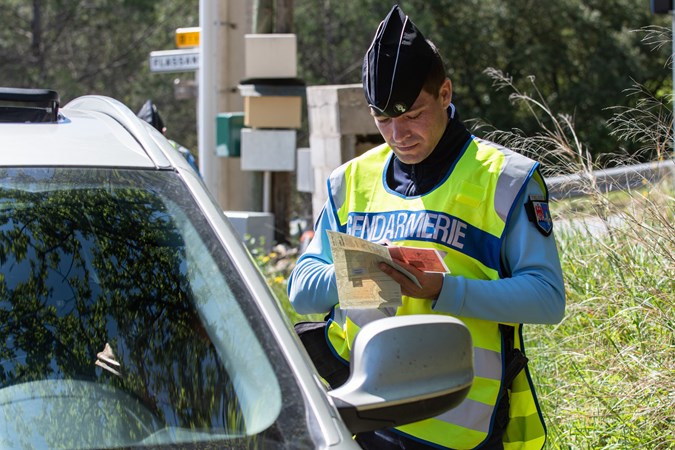
Paying for Autoroute tolls in France
Large stretches of the French Autoroute network are tolled. Travelling along them, you’ll periodically stop at a ‘gare de péage’ (toll station) to either take a ticket for the route ahead, or pay the charge. Stations are also positioned at entry and exit points. They’re not exactly cheap and the cost of covering lots of miles by tolled Autoroute can really mount up; if you’re budget-conscious, plan routes that avoid them.
Pick a lane as you approach a station and pull up to the payment machine. You can pay by card, some machines also take cash, some stations have manned booths. Signs above each lane show which payment methods are accepted.
On almost all of them (there are a few exceptions in the north of the country, near to channel crossings) the payment machine is on the left. If you’re driving solo you’ll either need arms like Inspector Gadget, hop into the passenger seat, or get out and jog around to take your ticket/pay. The barrier lifts when payment is accepted and closes once you’ve driven through – they’re not timed.
If you regularly drive in France, it can be more convenient to get a Liber-t tag, a little electronic box that attaches to the top left corner of your car’s windscreen. As you drive along a toll station lane, sensors detect the box and automatically open the barrier, charging the toll to your credit or debit card. Some of them allow you to drive through at about 15mph, a useful time saving.
Bip & Go and Emovis are the official suppliers. Liber-t tags are acquired on a subscription basis. There’s an application fee of €10, a refundable deposit for the device of €20, an annual fee for account management of €10, and a fee for each month the tag is used of €7, but it tops out at two months, so you’ll only pay €14. Your subscription connects to your credit/debit card for automatic monthly billing when travelling on the toll roads themselves. You can also use a Liber-t tag for paying tolls in Spain, Portugal and Italy.
If you’ve had one for a while it may be worth getting the tag replaced, as the batteries wear down over time, and you don’t want to be caught heading towards a barrier that won’t open. Tags can be swapped between cars as they’re linked to a payment card, not a registration number.
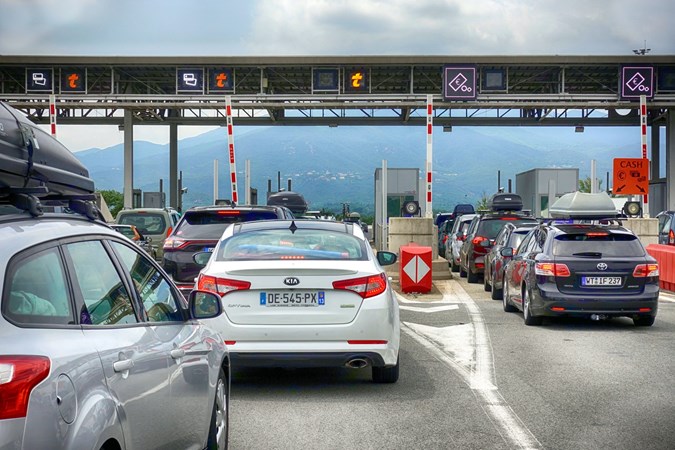
Using a speed camera detector in France
There is a total ban on using speed camera detection equipment – such as radar scanners and GPS trackers for fixed speed cameras – on French roads. If you have a standalone device, leave it at home. If your satnav or navigation app gives speed camera locations, make sure you turn the function off before travelling. Simply getting caught with a detector in your car could land you with a €1,500 fine (£1,280), and the device could be confiscated.
Rules of the road in France
Here are some of the other rules you should be aware of before driving in France:
The minimum driving age in France is 18, even if your licence qualifies you to drive at a younger age in your home country. However, from 16 you can ride a moped or motorcycle with an engine capacity of 125cc or less.
French motorists drive on the right-hand side of the road and overtake on the left. However, on multi-lane roads or Autoroutes, drivers are allowed to overtake on both sides of slow-moving traffic. Coming from British roads, that takes some getting used to.
Vehicles coming from the right have priority under most circumstances – you’ll see ‘priorité a droite’ signs at certain junctions. You may also see a stop line painted on the road when approaching a T-junction from any direction. You must at least slow down and check to see if it’s safe to proceed and be prepared to stop.
When approaching a roundabout, you’ll see signs that say ‘cédez le passage’, or ‘vous n’avez pas la priorité’. These indicate that traffic already on the roundabout has priority. You may also see the latter sign at other types of junction where you must stop and only proceed if there’s no oncoming traffic.

The extreme example of how French intersections work is the Arc de Triomphe in Paris, where vehicles entering the roundabout from any of its 12 spokes have priority. The locals steam onto it with barely a glance, trusting the other drivers to give way. If you’re a first timer, don’t rush and follow a line roughly along the middle of the road. The inexperienced tend to come unstuck attempting to cut in and out of the traffic. It’s only an urban legend that your insurance is invalidated if you drive there, but it certainly needs concentration.
It’s now illegal to wear headphones or earbuds while driving in France, regardless of whether they’re being used for handsfree calling or listening to music. If you’re caught using them, the Gendarmes can slap you with a €90 (£77) on-the-spot fine. This law excludes motorcycle helmets with integrated intercom systems.
Drink driving laws in France
Obviously, you should never get behind the wheel of a car after consuming any amount of alcohol. But, if you do, be especially cautious in France because the drink-drive limit is much lower than it is in the UK – a blood alcohol level of 0.05%, or 50 milligrams per 100 millilitres of blood.
By contrast, the limit in England, Wales and Northern Ireland is 0.08%. The French limit is even lower if you’ve been driving for three years or less, at just 0.02%, so it’s safer simply not to drink if you plan on driving within 12 hours or so.
Low emission zones in France
As with certain parts of the UK, several French cities have begun to implement low emission zones – known as ‘zone à faibles émissions’ (ZFE). As of August 2024 there are 11 cities with low emission zones including Paris, Lyon, Marseille, Rouen, and Nice. To drive within these zones your car must have been built after January 1997, and display a Crit’Air sticker in its windscreen.
There are six levels of Crit’Air sticker corresponding to a car’s emissions, in line with Euro emissions standards. Level 5 ‘grey’ stickers are for Euro 2 diesels; Level 4 ‘red’ for Euro 3 diesels; Level 3 ‘orange’ for Euro 2 and 3 petrols and Euro 4 diesels; Level 2 ‘yellow’ for Euro 4 petrols and Euro 5 and Euro 6 diesels; Level 1 ‘violet’ for euro 5 and 6 petrols. The sixth level is a green sticker for hydrogen-powered cars and electric vehicles.
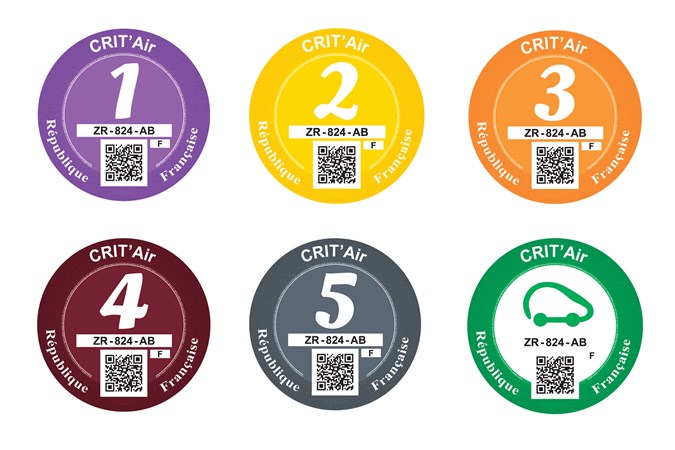
As you might expect, regulations are increasingly strict the less clean a vehicle is. Paris has the strictest enforcement, with even level 3 vehicles being banned from January 2025, while most other cities plan similar restrictions in future, varying by year.
If you have a car in one of the emissions categories, you’ll need to order the sticker online (only order from this official source, as there are scam sites operating), at a cost of €3.70 (around £3.17) plus postage. Failure to display an appropriate sticker can incur a €68 (£58) fine.
You may have heard there are moves to abolish France’s low emissions zones, indeed the French National Assembly passed a law to do so in May 2025. However, that was just the first stage in the legislative process. Any abolition would take some considerable time yet to come into effect, and there’s no guarantee it will as higher legislative bodies can overrule the Assembly vote. So, until further notice, all of France’s ZFE’s remain in place.
What do I need when driving in France?
Like most other European nations, France requires all motorists to carry a comprehensive set of documents and emergency items in their cars. If you’re road-tripping through several countries, make sure you’ve checked the requirements for each one and have bought the necessary items in advance.
In France you’ll need:
- Full, valid driving licence
- Proof of insurance
- Proof of ID (i.e. a passport or national identity card)
- V5C registration logbook (or a VE103 document for rented vehicles)
- High-visibility jackets for each occupant, within easy reach
- Warning triangle
- Breathalyser kit
A spare bulb kit for the car’s lights and a fire extinguisher are also recommended but not compulsory.
French hire car companies will provide all of these items with your rental. If you’ve driven your own car from the UK, you need to fix beam deflectors to your headlamps to avoid dazzling oncoming drivers at night. Cars with LED headlights may have a setting that points the beam in the correct direction. It’s very easy to find kits with all the necessary equipment, including the breathalyser, beam deflectors, and UK stickers, for affordable prices on websites like Amazon – £20-£30 is enough for a comprehensive kit.
Here’s a few recommendations for kit you should buy before travelling to France, or any other European country.
For all your European travel needs
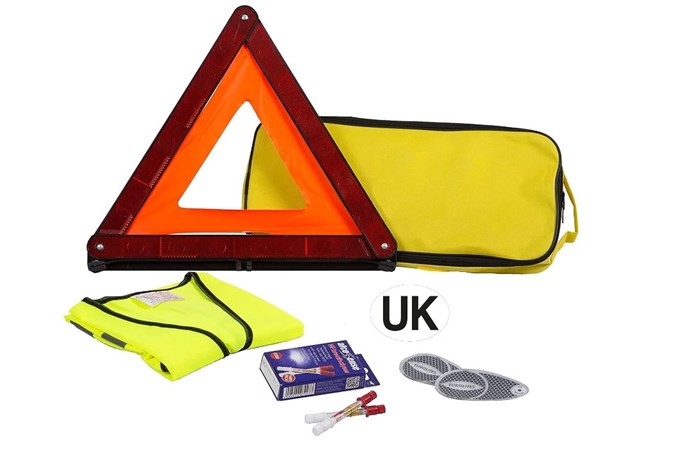

Always carry extra breathalysers
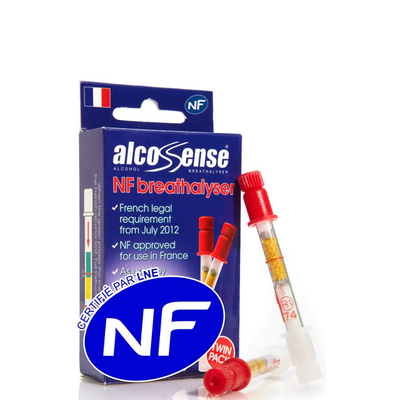

Less comprehensive but more affordable


Be safe, be seen
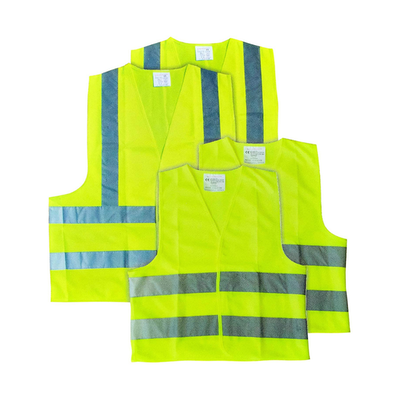

Do I really need a UK sticker to drive in France?
Since 28 September 2021, GB stickers and number plate badges haven’t been recognised as a country identifier in the European Union. Now, your car must display at least one UK identifier on the rear. You can have more elsewhere on the vehicle, as well. You don’t have to remove any old GB identifiers from your car, but there must a UK one.
Winter tyre requirements in France
New rules were introduced in 2022 requiring winter tyres be fitted to all vehicles driving in certain areas of France between 1 November and 31 March. When entering one of these areas, you’ll see a square sign with a red border with an image of a winter tyre showing the 3PMSF symbol – ‘3 Peak Mountain Snow Flake’, denoting a tyre verified for snow use – and a tyre wearing snow chains.
Winter tyre requirements are set by individual Départements (regions). Unsurprisingly, they’re all mountainous areas in the Alps, Massif Central and Pyrenees. They include Haute-Alpes, Alpes-Maritime, Ardèche, Loire, Rhône and Vosges. Of the 48 Départements covered by the rules, 34 have said they’ll actively enforce them. Full lists of the regions covered can be found online.
Most UK cars are fitted with summer tyres unless you request otherwise, so you’ll probably have to get a set of winter tyres fitted to your car before travelling. If you get caught without appropriate tyres on your car, you face a fine of €135 (around £116).
Emergency numbers in France
You can dial 112 from anywhere in Europe and an operator will connect you to the correct emergency service for the country you’re in. Operators in France can communicate with you in French or English. Dialling 17 will connect you directly to the local police force. If your car has an SOS call button, it should work in France.
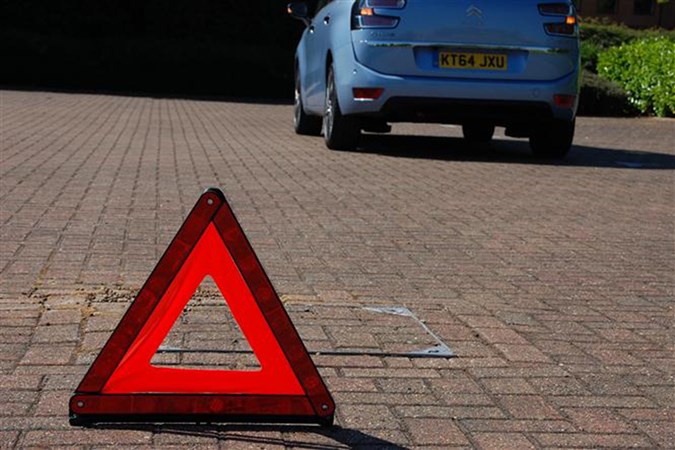
You should only use the hard shoulder on French motorways if it’s completely unavoidable, for instance if the car breaks down. You should put on a high-viz jacket and set up a warning triangle as quickly as possible. Failure to do so can result in a fine.
If your phone isn’t working, you’ll find emergency telephones sited at 2km (1.2 miles) intervals along the carriageway.
Towing in France
Campervans and cars towing trailers or caravans cannot exceed 18.75 metres in length and 2.55 metres in width. There are no restrictions on height. However, there are restrictions on weight that affect the maximum speed you can do.
If the weight of the trailer or caravan exceeds the weight of the vehicle towing it by less than 30%, you’re limited to a maximum speed of 65km/h (40mph). Over 30% and the limit drops to 45km/h (28mph). This could be an issue if you have a small-ish car with a high towing capacity – for instance, certain specifications of Skoda Karoq can tow 2,100kg but only weigh 1,650kg.
It’s also illegal to tow one car with another on French roads, unless in the event of a breakdown. Even then, you can only go a short distance, essentially far enough to get the car out of harm’s way. Towing a car on a trailer is allowed.
Car insurance in France
Every UK car insurance policy includes coverage for driving in the EU. You’ll have third-party cover at minimum, although some insurers do match the level of domestic cover. If not, you may be able to pay for an upgrade. You don’t need to carry an insurance green card when driving in the EU.
It’s also worth checking how long your European coverage lasts. Most insurers provide 90 days, some offer as little as three days. You may, therefore, need to pay extra for additional days.
If you’re sharing the driving with someone who doesn’t normally drive your car, it’s best to add them to your policy as a named driver. Even if they have their own fully comprehensive insurance, they’ll only have third-party cover when driving in Europe.
Breakdown cover in France
Make sure your breakdown cover remains valid if something goes wrong with your car outside the UK. Repatriating your car back home could cost thousands in recovery fees. If you break down and don’t have coverage, the emergency services will arrange recovery but you’ll be charged between €144 (£123) and €178 (£152), depending on the time and day, and the weight of your vehicle (cars over 1.8 tonnes attract a higher charge).
Just so you know, whilst we may receive a commission or other compensation from the links on this page, we never allow this to influence product selections – read why you should trust us.
Just so you know, we may receive a commission or other compensation from the links on this website - read why you should trust us.


